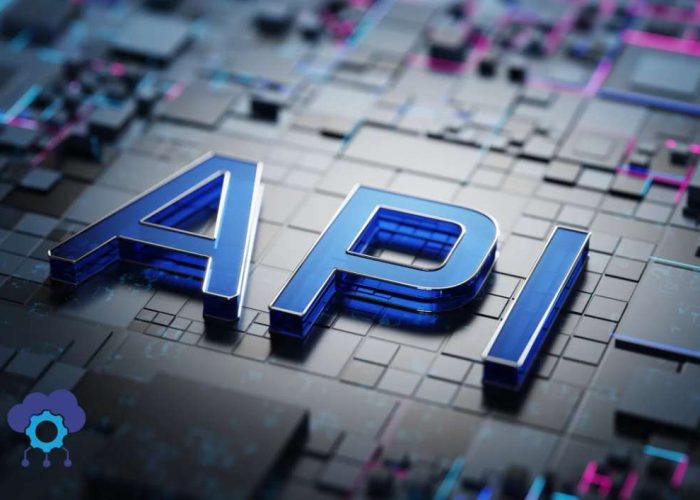Enterprise Architecture enables organizations to navigate the complexities of their environment in a secure and structured manner. It consists of an interconnected network of processes, people, and systems, where proper design is crucial given the increasing demand for more efficient solutions.
In this article, we will focus on Composable System Architecture, analyzing key aspects to consider when choosing APIfication as a strategy within Enterprise Architecture. We will explore topics such as API management and governance, as well as the main challenges and considerations to keep in mind.
1. API Governance: Standards, consistency, and scalability
API Governance defines the guidelines, standards, policies, and practices for API management and deployment within Enterprise Architecture. Below, we will explore how this concept is applied in practice and the best strategies for efficient management.
Defining guidelines and standards for APIs
API governance provides a strategic framework that defines policies and standards to ensure coherence and security for each component. It is not limited to design as a standard foundation; its scope is much broader, as it forms the backbone of the strategy and ensures API consistency throughout its entire lifecycle.
Companies cannot afford to overlook this step. A poorly planned governance framework, for example, during runtime, may result in catastrophic security issues. These not only include data breaches, but also, financial losses or sudden traffic spikes that could crash critical services.
We present five essential policies for efficient API management at runtime:
1. Simple Deployment:
Ensuring that API implementations are easy to apply, track, and roll back.
2. API Traffic Security:
Applying protocols like OAuth 2.0 or JWT to control resource access.
3. Accessible Documentation:
Guaranteeing that teams have access to complete and accurate documentation.
4. Impact Assessment of Changes:
Analyzing the effects of API modifications to prevent failures and disruptive changes.
5. Continuous Monitoring and Observability:
Implementing proactive monitoring to reduce recovery times.
Best Practices in API Governance for Efficient Management
As a starting point, it is essential to keep all company APIs organized. Having a clear inventory and an API catalog will facilitate the process. Once this step is covered, several aspects must be considered:
1, Automating the API lifecycle
- Using API management tools (API gateways) to control access, monitor traffic, and enforce security policies.
- Implementing CI/CD pipelines for controlled deployments and automated testing.
2. Real-time Monitoring and Observability
- Applying tools like Prometheus or ELK Stack to analyze traffic and detect anomalies.
- Establishing key metrics (latency, error rate, traffic) to evaluate API performance.
3. Decentralized governance with centralized control
- Delegating API management to development teams, but within a regulatory framework that ensures consistency.
- Implementing API catalogs to document and manage their versions and access.
4. Security and regulatory compliance
- Adopting security frameworks like Zero Trust to minimize risks.
- Ensuring compliance with regulations such as GDPR, CCPA, or PCI-DSS for data protection.
5. Evolution and Deprecation Strategy
- Defining clear processes for updating and retiring obsolete APIs without disrupting operations.
- Communicating changes well in advance to developers and internal users.
2. Fostering an API-Driven culture
Beyond the digital transformation that organizations require, a cultural shift is essential—one that prioritizes API development. This involves adopting an API-First approach, meaning that APIs are designed and developed first, before building the rest of the technological infrastructure. This ensures interoperability, scalability, and reusability of digital services.
To achieve this cultural transformation in an organization, a series of steps must be followed to facilitate the adoption of APIs as a strategic asset. Among the key aspects are defining a clear structure and implementing centralized documentation. Below, we detail these points.
API Documentation and centralized repository
The first step is to create clear and comprehensive documentation—a technical manual that includes all relevant API information. Each documentation should cover key aspects, such as:
- Interoperability between systems
- Compliance with technical standards
- Security requirements
Well-prepared documentation helps developers use APIs consistently and promotes scalability and continuous application updates. Its primary function is to help users easily understand how APIs work, ensuring their long-term maintenance.
Below are some important aspects to consider when implementing a secure and centralized documentation repository:
Adopting Automated Documentation Tools
Using specialized tools simplifies the documentation process and allows organizations to generate APIs faster, while also offering interactive features for monitoring and continuous updates.
A popular example is Swagger, an open-source tool based on OpenAPI specifications, which enables automated generation of technical API documentation. Swagger provides an intuitive interface where users can utilize predefined templates to automatically generate server-side code and client libraries. Additionally, this platform is compatible with various API management systems, such as IBM API Connect, Apigee, and AWS API Gateway, and is fully optimized for management and editing through an accessible and interactive visual interface.
You might find the following article interesting: Key Trends in API Management for 2025
Design and technical specifications
The widespread adoption of the OpenAPI standard for documentation is key, as it facilitates effective communication between technical and non-technical teams and automates important processes, such as:
- Testing
- Validations
- Automatic code generation
Beyond technical specifications, it is important to create clear and accessible documentation for a variety of audiences, including developers, business leaders, and decision-makers such as CTOs. This document will serve as the primary resource for understanding how an API functions, its parameters, and how it should interact with other systems.
Additionally, non-technical members of the organization frequently consult this documentation to understand the functional and strategic value of APIs, as well as to assess costs and benefits at an administrative level.
It is equally important to write documentation in simple, direct, and user-friendly language. Avoiding repetitive or overly technical texts significantly improves the user experience, increases internal and external adoption, and optimizes API utilization within and outside the organization.
Security and privacy
- Mandatory application of protocols such as OAuth 2.0 and OpenID Connect.
- Advanced standards for data protection and regulatory compliance, particularly in regions like Europe (GDPR) and Latin America.
Performance and scalability
- Establishing SLAs (Service Level Agreements) and clear performance metrics to enable continuous monitoring and improvement.
Strategies to promote API-First initiatives in the organization
As a starting point, it is essential to evaluate the current technological infrastructure of the systems to identify areas for improvement and optimization, aiming to determine the best way to add value to the company.
Then, it is necessary to clearly define KPIs (Key Performance Indicators) that will allow measuring:
- The achievement of set objectives
- The success of implemented initiatives
It is also important to consider the cultural aspect within the organization, as there may initially be resistance to change from teams. Therefore, clearly communicating the benefits of the API-First approach and providing the necessary resources, training, and support are essential steps to facilitate this transition.
3. API Security: Implementing API Security by Design
The API Security by Design approach involves integrating security as a priority from the early stages of development, anticipating potential threats and significantly reducing the risks associated with API consumption.
Advanced authentication and authorization strategies
Advanced authentication and authorization are essential to ensure that only legitimate users and applications can access APIs. Key strategies include:
- OAuth 2.0 – Currently the most widely used standard for authorizing limited and secure access to API resources without exposing sensitive credentials. OAuth allows for easy granting and revocation of access, significantly improving identity management.
- OpenID Connect (OIDC) – A layer on top of OAuth 2.0 that simplifies authentication using secure tokens (JWT), facilitating identity management and secure access to multiple applications and APIs.
- Multifactor Authentication (MFA) – Combines multiple authentication methods (e.g., passwords, biometrics, and one-time tokens) to ensure access is granted only to legitimate users and systems, drastically reducing the risk of security breaches.
- Attribute-Based Access Control (ABAC) – Enables advanced authorization decisions based on context, user attributes, requested resources, and specific conditions, offering greater precision and granularity in security policies.
Tools and Approaches for Threat Protection
Implementing effective protection against threats requires adopting specific tools and techniques capable of detecting, mitigating, and preventing attacks in real-time. The most relevant tools and approaches in API security management include:
- Web Application Firewalls (WAFs) – Solutions that analyze API traffic to detect suspicious patterns and block common attacks, such as SQL injections, Cross-Site Scripting (XSS), and DDoS attacks.
- Rate Limiting and Throttling – Control traffic flow to APIs to prevent abuse, brute-force attacks, and ensure service availability.
- Automated Behavior Analysis – Tools based on Artificial Intelligence (AI) and Machine Learning that identify anomalous usage patterns, allowing for early threat detection and proactive attack prevention.
- Regular Security Testing (Pentesting & Vulnerability Scanning) – Periodic evaluations that simulate real attacks to identify security weaknesses in APIs before they can be exploited.
4. Composable and decoupled architecture: The future of integration
As previously discussed, Composable Architectures enable more flexible and efficient integration, facilitating quick adaptation to changes and the implementation of new functionalities.
Below, we provide a brief summary of the benefits and challenges of this approach.
Benefits and trends in composable architecture
Composable architectures offer multiple advantages that are driving their adoption across various industries:
Flexibility and Scalability
Since they are composed of independent modules, these architectures allow for scaling specific components based on demand, optimizing resources and improving operational efficiency.
Faster Implementation
The ability to reuse existing components accelerates the development of new functionalities, reducing time-to-market and increasing competitiveness.
Resilience and Simplified Maintenance
Because components are decoupled, they can be updated or replaced without affecting the entire system, improving resilience and facilitating maintenance.
A major trend is the adoption of microservices, where applications are divided into small, independent services that communicate through APIs. This improves modularity and allows teams to work autonomously on different components, fostering innovation and efficiency.
Challenges and considerations for a seamless technological evolution
Although Composable Architectures offer numerous benefits, their implementation presents challenges that organizations must carefully consider to avoid technological bottlenecks:
Management complexity
Coordinating multiple independent components can increase system complexity if not properly handled, requiring effective management tools and practices.
Security and governance
Exposing multiple APIs increases the attack surface, making it essential to establish robust security and governance policies to protect data and ensure regulatory compliance.
For a successful transition to composable and decoupled architectures, organizations must adopt a comprehensive strategy that includes:
- Training personnel on best practices
- Investing in the right tools
- Implementing agile development methodologies
Additionally, fostering a collaborative and innovation-driven organizational culture is essential to achieving technological evolution without obstacles, ensuring alignment with business objectives.
Conclusion
APIfication in Enterprise Architecture is not just a technological shift but a structural and cultural transformation that allows organizations to enhance interoperability, scalability, and operational efficiency. However, its adoption requires a well-defined strategy that includes robust governance, advanced security, and an API-First approach to ensure consistency and sustainability within the digital ecosystem.
To achieve a successful implementation, it is crucial to:
- Establish clear standards
- Document APIs effectively
- Ensure accessibility for different organizational levels
Moreover, security must be embedded from the beginning of development by applying API Security by Design and using advanced protocols to mitigate risks.
While transitioning to a Composable Architecture driven by APIs presents challenges, the benefits in agility, innovation, and business efficiency are substantial. In this journey, having expert guidance can make all the difference.
At Chakray, we assist businesses in designing and implementing API-driven strategies tailored to their needs, ensuring secure, scalable solutions aligned with business objectives. Contact us today and take your digital transformation to the next level!


Talk to our experts!
Contact our team and discover the cutting-edge technologies that will empower your business.
contact us





